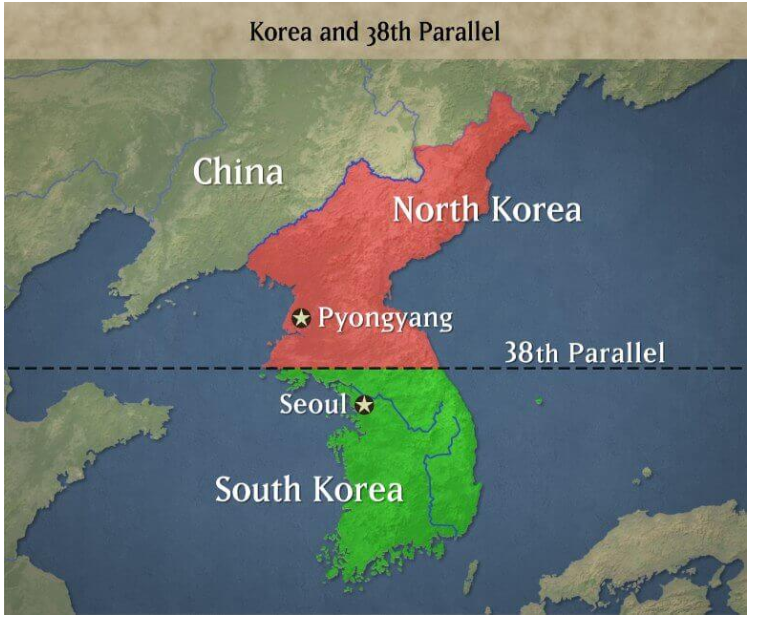Escalating Tensions: North Korea Mobilizes Amid Renewed Hostility with South Korea
(Source: Indian Express; Section: Explained; Page: 15)
| Topic: GS2 – International Relations |
| Context: |
|
Analysis of News:

Historical Context
- The Korean Peninsula was divided after Japan’s surrender in 1945, with the Soviet Union and China supporting North Korea and the U.S. backing South Korea.
- The Korean War (1950-1953) resulted in an armistice but no peace treaty, leaving both nations technically at war.
- Over the decades, reunification efforts were made, but progress was minimal, especially as North Korea developed nuclear weapons, facing sanctions from the UN and the West.
Genesis of Current Tensions
- The breakdown of U.S.-North Korea talks in 2019, particularly after the failed Hanoi summit between Donald Trump and Kim Jong Un, was a turning point. Kim viewed the collapse of negotiations as a significant loss, leading North Korea to renew its nuclear program.
- In 2024, Kim declared South Korea as the North’s “primary foe,” officially abandoning hopes for peaceful reunification, culminating in recent border tensions.
Potential for War
- While tensions are at their highest since 1950, experts believe that war is unlikely.
- North Korea’s actions are seen as tactics to strengthen internal unity by emphasizing external threats, rather than actual preparation for a large-scale conflict.
| What about India’s Position in Korean Conflict? |
India’s Stand:
India’s Relations with North and South Korea:
|
| PYQ: Evaluate the economic and strategic dimensions of India’s Look East Policy in the context of the post-Cold War international scenario. (200 words/12.5m) (UPSC CSE (M) GS-2 2016) |
| Practice Question: Discuss the historical and geopolitical factors contributing to the persistent tensions between North and South Korea. In light of recent developments, evaluate the possibility of conflict and the role of external powers in the region. (150 words/10 m) |
